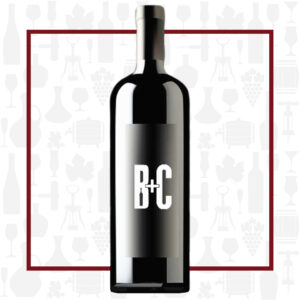Cellar Profile
Situated in Chalk Hill, G & C Lurton’s neighbour is the iconic Vérité Winery. Indeed, it was Vérité’s winemaker, fellow Bordelais and friend Pierre Seillan, who told Gonzague and Claire Lurton about this fabulous vineyard, which led them to buy it. This power couple grew up in the Bordeaux wine industry. “Lurton” is a household name in wine circles and Claire Villars-Lurton brought back her family’s Grand Cru Classé estates (Château Ferrière and Château Haut-Bages-Libéral) to their former glory, becoming some of the most sought-after releases every year. This Sonoma County estate is planted vertically, in a sloping amphitheater, where biodynamic farming methods are employed. Planted to classic Bordeaux varieties — Cabernet Sauvignon, Cabernet Franc, Merlot and Sauvignon Blanc — the focus is on creating premium, limited bottlings of exquisite quality, each wine aged before release. Sitting east of Russian River Valley and southwest of Alexander Valley and Knight Valley, Chalk Hill is known for giving powerful, structured reds. Lurton wines are just that: powerful, graceful and structured.
Region
Chalk Hill is a tiny AVA in Northern Sonoma County, nestled among the eastern hills of the famous Russian River Valley. Its unique terroir in the hills means that it is slightly warmer than many of the surrounding AVAs. It is planted mostly to Bordeaux varieties. Chalk Hill has around 650 hectares (1600 acres) of land under vine and just a handful of producers. Chalk Hill’s terroir is based on powdery white volcanic ash, which is less fertile than the alluvial soils in the valley below. Soils with low fertility are usually considered optimum for winegrowing, as they force vines to work hard for survival, leading to lower yields of higher-quality grapes.
Vineyard
24 acres of sublime Chalk Hill estate vineyards, with a dizzying array of volcanic soils, topography and microclimates. The vines are planted vertically, to minimize soil loss, with ground cover between the rows. Farmed organically (while not officially registered as such), following biodynamic principles, great care is undertaken to ensure the biodiversity of the area is respected. The double Guyot trellis is employed to ensure the grapes are given plenty of sun exposure, but the canopy can be properly managed to shield the clusters from the hottest part of the day.
Varieties
Cabernet Sauvignon is probably the most famous red wine grape variety on earth and has successfully spread to almost every wine growing country. DNA profiling carried out in California in 1997 confirmed that Cabernet Sauvignon is the product of a natural genetic crossing between key Bordeaux grape varieties Cabernet Franc and Sauvignon Blanc. There are two key reasons for Cabernet Sauvignon’s rise to dominance. The most simple and primordial of these is that its vines are highly adaptable to different soil types and climates; it is grown at latitudes as disparate as 50°N (Okanagan Valley, Canada) and 20°S (northern Argentina), and in soils as different as the gravels of Pessac-Leognan and the iron-rich terra rossa of Coonawarra. Secondary to this, but just as important, is that despite the diversity of terroirs in which the vine is grown, Cabernet Sauvignon wines retain an inimitable “Cab” character, nuanced with hints of provenance in the best-made examples. Cabernet Sauvignon wines always seem to demonstrate a handful of common character traits: deep color, good tannin structure, moderate acidity and aromas of blackcurrant, tomato leaf, dark spices and cedarwood.
Winemaking
Hand-harvested in the early morning, to maintain freshness and keep the grapes cool, the grapes are hand sorted to ensure their quality before a gentle crush. After the long, slow, wild yeast fermentation is complete, the wine is transferred to French oak barriques (30% new) for a year of oak aging before bottling, where it rests for another couple of years before release.
Tasting Notes
Aromas of blackberry, black licorice, currant, fig and baking spices. On the palate, it’s medium- to full-bodied, with replaying blackberries and currant, along with strawberry, anise, vanilla and pipe tobacco. The tannins are fairly firm, but smooth enough to enjoy now. There is a hint of cooling menthol on the long finish that has this elegant beauty screaming for a grilled rack of lamb dinner partner.

 info@buyersandcellars.ca
www.buyersandcellars.ca
info@buyersandcellars.ca
www.buyersandcellars.ca